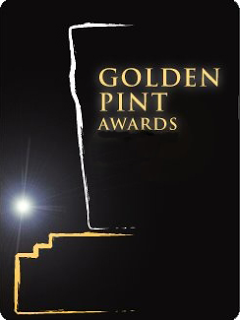Decoction and COMECON
Triple decoction. The only real decoction mash, to my mind. Three times a part of the mash is removed and boiled, then returned to the main mash to increase its temperature to the next stage.
Lager brewers have been moving away from decoction for years, as the cost of fuel to do it is ridiculous. It is, however, still proudly practised at Pilsner Urquell, at least, so they say.
A retired brewer told me of a visit to Pilsen shortly after the Iron Curtain came down. He saw the last train of Pilsner beer destined for Russia standing in the brewery yard. Apparently there was a deal with the Soviet Union to exchange Czech beer for cheap gas. Perhaps this was the reason there was no pressure on the Prazdroj brewery to move away from decoction.
I do not know enough about the peculiarities of trade within the Soviet bloc to say whether or not this story is plausible.
Lager brewers have been moving away from decoction for years, as the cost of fuel to do it is ridiculous. It is, however, still proudly practised at Pilsner Urquell, at least, so they say.
A retired brewer told me of a visit to Pilsen shortly after the Iron Curtain came down. He saw the last train of Pilsner beer destined for Russia standing in the brewery yard. Apparently there was a deal with the Soviet Union to exchange Czech beer for cheap gas. Perhaps this was the reason there was no pressure on the Prazdroj brewery to move away from decoction.
I do not know enough about the peculiarities of trade within the Soviet bloc to say whether or not this story is plausible.


Triple decoction might not be as common as it once was, but hardly any Czech brewer worth their salt would even consider moving away from a decoction mash. In fact, in order to get the European Label České Pivo the beer must be made with a decoction mash.
ReplyDeleteAnd the Gods bless them, without it the average Czech světlý ležák might end up tasting like the average German Pils, and nobody wants that here.
Thankfully Jason Oliver at Devils Backbone is a devotee of decoction mashing, though mostly double decoction for most of his lagers, though he does up to triple for the Ur-Pils when he does it. If I remember rightly, Staropramen do a double rather than triple decoction.
ReplyDeletePilsner Urquell is still the best pilsener, indeed best blonde lager, in the world IMO. I fully agree German pils, even helles, is lighter and simpler in taste, at least the ones I've had. (I like Radeberger on draft though when very very fresh, it has an almost Riesling-like character, but that is a different keddle of fish from Urquell, which still stands on its own IMO).
ReplyDeleteAlso, the Saaz hops usually attain a complex flowery spiciness that is different, in my experience again, to the profile of the typical Germano-Austrian lagers. The keynote of these seems to be a grassy, almost barnyard or onion-like taste, I assume from the Noble hops grown in those lands. It is specific in character IMO and goes great with food or in a session. It's a classic taste but once again not on the same level as Urquell, for me.
I am no expert in Czech beers but on a there two years ago and tasting a dozen lagers available in Prague, only Bernard seemed to me to rival Urquell in quality.
We get Urquell in Ontario within about 8 weeks from packaging - I always use the canned one, never the green bottle which we get too - and the taste is outstanding even though it is pasteurized.
Gary
This post isn't about Comic-con at all!
ReplyDeleteHello - sorry for getting in touch with you this way! I wondered if you could possibly send me an email address to get in touch with you by? Ali King suggested you may be interested in speaking with me about a few beery opportunities with Tennent's and some craft brewers I work with. You can reach me at amanda AT whitespacers DOT com. Thanks!
ReplyDeleteVery late arriving, but my two cents. Triple decoction is generally bad unless you've found some kind of heirloom malt that can handle the boiling. Double is now the standard and what I presume PU uses. (Budvar does a double decoction and is in all other ways hugely traditional.)
ReplyDelete